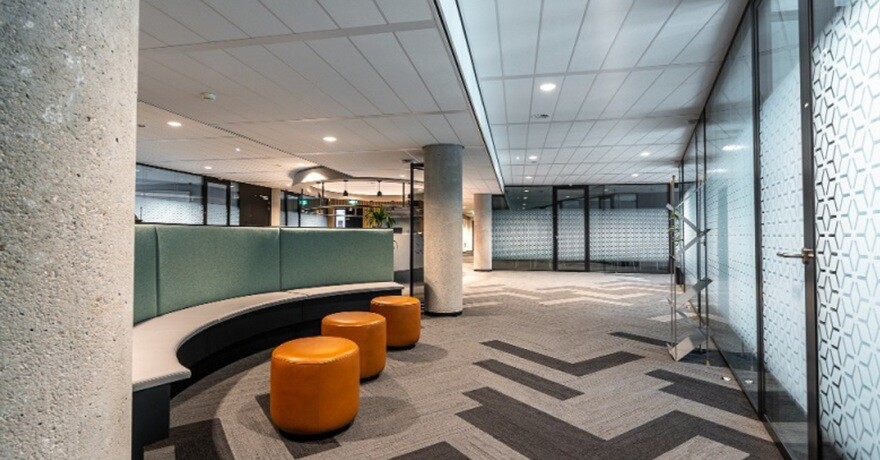Thinking about giving your workspace a fresh start? A commercial fit-out could be just what your business needs. Whether you’re setting up a new office or revamping an existing space, understanding what a fit-out involves is the first step toward creating a productive and professional environment.
In this guide, we’ll walk you through the essentials of a commercial fit-out—from the definition and process to choosing the right team and navigating a unique business landscape. Let’s explore how a well-executed fit-out can elevate your brand and boost workplace efficiency.
Introduction to Commercial Fit Outs
Short on space? Need a fresh look for your current premises? A commercial fit-out might be exactly what you’re searching for. But before we delve into the nitty-gritty, let’s look at the essential concept of a fit-out and see how it can benefit businesses.
Why Do Businesses Need a Building Fit Out?
A building fit-out helps businesses optimise their workspace for performance, comfort, and branding. If your layout is chaotic—or worse, barely there—your team could struggle to collaborate and stay productive. A well-planned fit-out, on the other hand, allows you to organise zones for different functions: meeting rooms, open-plan desks, or breakout areas for a quick chat. It also ensures essential facilities like kitchens, washrooms, and reception desks are placed logically.
Aside from functionality, a commercial fit-out can improve your company’s image. Imagine your clients walking into a stylish, welcoming lobby that reflects your brand colours and ethos. This attention to detail often makes a powerful first impression and can set the stage for successful meetings.
Overview: Commercial Fit Out
Places are known for their booming commercial scene, with offices, retail spaces, and restaurants popping up across the city. Because rents can be high, companies must make the most of every square metre. That’s where a thoughtfully crafted commercial fit-out comes in handy. Your building fit-out can help you make efficient use of limited floor area, all while displaying your business’s unique personality to prospective clients.
Planning a commercial fit-out also involves paying close attention to local regulations and council approvals, especially for heritage-listed buildings or spaces that need specific alterations. Getting familiar with these rules early on can save you plenty of hassle in the long run. By the time you’re finished, you’ll have an attractive working environment that can help your business operate smoothly in the heart of the city.
Types of Commercial Fit Outs
Not all fit-outs are created equal. Some might only cover the basics—think lighting, flooring, and HVAC—while others tackle every design detail down to the decorative artwork. Understanding the different types can help you decide which commercial fit-out is right for your business.
Fit Out Interior Design: Creating Functional and Aesthetic Workspaces
Fit-out interior design is all about merging style and function in your commercial space. A design team might focus on ergonomic workstations, meeting rooms equipped with audio-visual technology, and communal areas such as kitchens or lounge nooks. For projects that require seamless integration of display, audio, and control systems, it’s often beneficial to engage experienced commercial AV design and installation specialists who can plan and install networked AV solutions tailored to corporate, education, or healthcare environments. By integrating brand colours, logos, and decor, a commercial interior fit-out can drive home your identity while still meeting operational needs.
It’s crucial to also factor in local building codes and environmental sustainability. Many offices are opting for greener materials, such as energy-efficient lighting or recycled furniture. By choosing eco-conscious finishes, you can help lower long-term energy costs and display a commitment to environmental responsibility. This step can be a great way to future-proof your workspace, too, given that eco-friendly designs often age more gracefully.
Examples of Commercial Interior Fit-Out Projects
Commercial fit-out examples range from small cafés to multi-storey corporate offices. For instance, a cafe might include comfortable seating areas, stylish tiling, up-to-date kitchen appliances, and an appealing shopfront. Bigger projects include high-rise offices that feature large reception spaces, soundproof conference rooms, extensive IT setups, and open-plan desk areas.
Retail fit-outs also fall under this umbrella, ensuring shops have proper checkout areas, display shelves, and fitting rooms that align with store branding. Ultimately, each commercial fit-out project is guided by the needs of the business. Some focus heavily on branding, while others prioritise maximum seating or flexible layouts for evolving teams.
The Role of a Commercial Fit-Out Company
Undertaking a fit-out is no small task. It involves careful scheduling, design expertise, and a dose of problem-solving skills. That’s exactly where a commercial fit-out company steps in. Their job is to coordinate all these moving parts so your business can have a smooth transformation from empty shell to eye-catching workspace.
Fit-Out Company Meaning: Who Are They and What Do They Do?
At its core, “fit-out company meaning” boils down to a team of professionals who specialise in making commercial interiors functional and visually engaging. They often employ project managers, architects, interior designers, and construction specialists under one umbrella. This integrated approach ensures every step—planning, design, electrical, furniture installation—happens in the right order and within the set time frame.
A good commercial fit-out company will collaborate with you to define your goals and budget. They’ll also guide you through the local compliance requirements, ensuring everything meets council or landlord standards. Essentially, they aim to handle the complexity so you can stay focused on running your business.
How to Choose the Right Commercial Fit-Out Company
Choosing the best team for fit-out work can dramatically affect your final result. To start, look for any firm with a track record of delivering commercial interior fit-outs in your industry—if they’ve worked on similar projects before, they’ll likely have valuable insight into what works and what doesn’t. Reading testimonials or case studies is a quick way to confirm the quality of their past work.
It’s also wise to follow up on references so you can ask previous clients about their experiences. Beyond that, make sure you feel comfortable communicating with them. Does the company respond quickly? Do they understand your vision and values? Finally, don’t forget to discuss project timelines and budgets. Aligning expectations at the beginning will help avoid delays or hidden costs down the track.
Budgeting and Cost Breakdown for Fit Out Work
Budgets can vary widely based on the type and scale of the building fit-out. Some costs to consider include project management fees, design consultations, construction labour, and materials like flooring or partition walls. You might also need to budget for furniture, technology upgrades, and potential permits.
Ask for a detailed breakdown to understand exactly where your money goes. A transparent quote will show line items for each stage of the project. It’s a good idea to set aside a contingency fund, too, in case unforeseen problems arise, like discovering old electrical systems that need upgrading or structural issues that require an engineer’s input. This extra buffer can help you deal with hiccups without derailing the entire project.
Step-by-Step Fit Out Process
Undertaking a commercial fit-out is often a journey with multiple phases. Sticking to a well-defined process can ensure that everything stays on track, from the initial idea to the final handover. Let’s break down the main stages.
Planning and Feasibility: Where to Begin
Every successful project starts with clear planning. First, get your ideas onto paper. Try to picture your ideal workspace. What do you want to achieve with the fit-out? Do you want a more collaborative environment, or are you aiming for quiet, focused corners? At this stage, you’ll typically outline a rough budget and time frame.
Next, your chosen commercial fit-out company will conduct a feasibility study. They’ll assess the space for structural quirks, look at existing mechanical systems, and determine what approvals are required. This feasibility check is crucial because it ensures your project goals match what’s actually achievable in the time and budget you have allocated.
Design and Layout: Leveraging Interior Design Principles
Once your planning phase is set, it’s time to get stuck into the design. Commercial interior fit-out experts will work with you to create a layout plan highlighting each area of your workspace. They’ll think through the flow, ensuring staff and visitors can move easily from one area to another. Elements like lighting, acoustics, and ventilation are carefully considered here.
Materials and finishes also come into play at this stage. Whether you prefer sleek modern designs or want a rustic, industrial vibe, your interior design team can suggest colour palettes, furniture styles, and decorative accents. Some businesses choose open-plan concepts that encourage collaboration and shorter partitions. Others lean towards cluster seating, cubicles, or even pods for quieter tasks. The choice will largely depend on your company culture and the demands of your day-to-day activities.
Handover and Post-Fit Out Maintenance
When construction reaches its final stage, you’ll have a walkthrough of the newly fitted space. You and your commercial fit out company will check that everything aligns with the original plan. Any minor issues or “snags” (like a chipped paint patch or a misaligned door) are noted and rectified. Once you’re satisfied, the official handover happens.
Post fit-out maintenance can sometimes be overlooked, but it’s a vital part of keeping your space functional and safe. Regular inspections of mechanical systems, office equipment, or even just routine upkeep of furniture can prolong the life of your fit-out. Plus, if future adjustments are needed—say, to accommodate a new team member or change in direction—your updated space can more easily adapt.
Conclusion
Embarking on a commercial fit-out is a smart move for businesses looking to enhance functionality, boost team morale, and leave a lasting impression. With the right planning and expert guidance, your space can be transformed into a productive and visually engaging environment that reflects your brand. Whether you’re starting fresh or upgrading, a well-executed commercial fit-out project is an investment that delivers long-term value.
You may also like to read,










